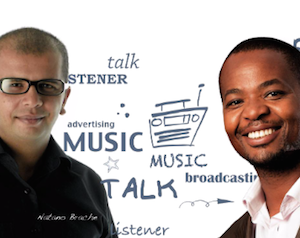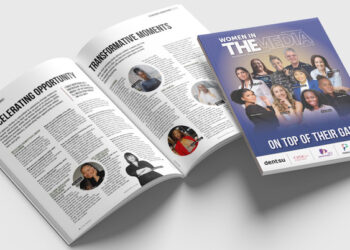Head of programming at POWER FM, Lance Rothschild, examines the trends in the radio programming space and how stations can keep listeners plugged in to this resilient and popular medium.
The media market is constantly evolving and whilst radio’s demise has been predicted over several decades, it remains one of the best performing constants within the media mix.
Bob Pittman, chairman and CEO of Clear Channel, the predominant radio-owning organisation in the US, says: “The radio industry has never been bigger or better. With the TV business turning into delayed viewing, cord-cutting and binge viewing, radio is the last mass-reach, real-time medium. We’ve never been more important to the consumer or the advertiser.”
Quality content
Fundamentally the business model of radio is quite simple. The continuous sequence that sustains all commercial radio stations starts with the making of a great product; progresses through the attraction and retention of an audience and concludes with advertising sales.
There’s a very simple logic to this sequence: listeners have a multitude of options and therefore won’t invest their time listening to a station that doesn’t appeal to them. If the product is sub-standard, it’s not going to attract and retain a viable audience and consequently, it will fail to generate sustainable revenue through sales.
“The commercial radio industry is pretty strong – even on a global basis – despite all sorts of predictions of its demise in the face of digital disruption,” says Nick Grubb, chief executive, Kagiso Media Radio.
“Good radio stations are holding their own against other media choices – it’s the marginal stations that are falling off listener repertoires and media schedules. A well programmed station is built off strong audience research and strong, proven, principles in applying music rotations and the right mix of talent and content,” he adds.
Neil Johnson, programming manager at Kaya FM, agrees. “We think of Kaya as a platform and not as a delivery method. We’re more than just our words, we’re a product and storytelling business, and not a headline and body-copy business. Stations need to acknowledge that their audiences are finite. Building a sustainable business around your audience is what’s going to matter in the future.”
Radio has survived many attacks and has proven its resilience. The key reason for radio’s continued survival is that it maintains context for the listener, keeping the listener plugged in to what is going on.
Reach and rate inflation
“In South Africa, radio is the medium with the broadest reach across the population,” says Natano Brache, Head of Programming and Innovation at SABC Radio. “Radio remains more relevant than ever, particularly our African Language Services (ALS) stations that have a mass reach, especially in the rural areas.”
In today’s radio environment, stations are increasingly emphasising that it’s less important to count the people you reach than it is to reach people who count. It’s about having a clear focus on the listeners and offering content that delights and engages an audience.
In a recent presentation to the media industry, Given Mkhari, MSG Group chairperson, pointed out that his platforms, POWER 98.7 and Capricorn FM, are focusing on consolidating their listenership through quality content, which results in delivering better-defined quality prospects to marketers. “It’s most certainly not a chase for mere numbers, it’s about building a quality audience of potential prospects for an advertiser’s products and services.”
One of the more serious threats to radio advertising is rate inflation. The growing perception is that radio is increasingly expensive and that rate inflation increases the viability of substitute media options, with digital achieving substantial growth.
“The challenge for radio advertising sales is that increasing budgetary constraints, and increasing radio rates are driving advertisers to look for cheaper platforms on which to spend their budgets,” says Brache.
“We have to adapt our offerings to clients and be more solution-focused if we’re to retain clients. Advertisers no longer look at RAMS, which they simply don’t trust anymore. This makes reach a less important factor in the planning and executing of a radio advertising campaign and drives advertisers to focus more on “bang for buck” with a solid emphasis on ROI,” he adds.
Brache explains that sales and programming departments need to break down their silo working methodologies and jointly create more sellable content for their clients. The challenge is to ensure the content remains relevant and compelling for the audience.
Grubb maintains that reach is still extremely important. “At the recent Radiodays Europe conference it was clear that radio is still favoured for its reach. Radio’s reach is still growing and extending to younger demographics – a vital sign for the sustainability of the industry.”
Measurability and radio campaigns
Grubb believes that the 30-second spot will never die. “Many campaigns still combine great creative with a solid brand proposition, and engage consumers via the right reach and frequency on the right stations.
Increasingly, the 30-second spot operates in tandem with activation, digital and promotional opportunities. Stations need to offer and create holistic campaigns that deliver specific results. One caveat here is that campaigns need to be carefully crafted to ensure that there’s no compromise of editorial integrity.”
The challenge to advertisers is to keep the media schedule well-focused and the creative execution relevant and compelling.
Measurability of radio campaigns is an emerging trend, driven by the slow-growth economy and by increasingly-strenuous corporate governance requirements. Marketers are being forced to very carefully evaluate spend with increasing pressure to measure and prove the effectiveness of all activity.
ROI is being carefully measured and marketers are turning to technology to measure (and ensure) efficacy of advertising spend. This is no longer a “nice-to-have”, it is an imperative.
Independently-provided compliance certification is increasingly being used to ensure that advertisers pay for what they get and get what they booked. Auditors are no longer merely accepting station invoices and logs as proof of delivery.
An important trend in Australia and USA and one that’s gaining stature in South Africa, is that of stations contracting with external verification services to monitor (and prove) performance. Through this, stations reduce queries about invoices, which, in turn, improves cash flows.
Afstereo, a company with exclusive rights to the AirCheck™ technology from the USA, has been monitoring broadcast output across many radio (and television) stations with an excess of 99,2% accuracy.
“We’ve been monitoring advertising and music activity across several stations for about nine years,” says Tamar Jacobsen from Afstereo South Africa. “Aside from having a comprehensive database of advertising and music activity, we’ve embedded intelligence on spend across market sectors, campaign strategies and can see which stations (and even time channels) are heavily sold-out and which have substantial capacity.”
A trend that Afstereo have recently identified is that within certain categories, marketers have either not increased spend, or decreased spend.
“The marketer is holding the budget steady and buying the number of spots their budget can accommodate, given rate inflation. The number of stations across which they run the campaign is reduced in order to maintain reach and frequency presence across the stations that they’ve remained with,” adds Jacobsen.
This targeting and segmenting of media selections will increase competition among stations, but is it healthy and sustainable?
Stations are under much pressure from clients seeking added value and discounts, however a station has never discounted itself to profitability. While added value can sweeten the deal for clients, stations need to manage their finite stock of inventory and not give away too much in value, which discounts the station’s core proposition.
Digital romance
Radio’s romance with digital needs to be examined. Adding impetus to a client’s campaign by placing banner ads on station websites is nice to have, but is a distraction.
Let’s remember that radio stations are in the business of broadcast radio first and foremost. Listening habits are still such that stations broadcast their content over transmitters – this is the primary engagement interface between the platform and the listener.
Digital platforms provide a substantial degree of measurability. Whilst this is important, particularly as new technologies can provide deeper insights into the individuals behind the “digital audience”, stations must continually evaluate the data they receive from their audience to ensure that they are on-target. This is a positive spin-off from digital and social media.
Social media has played a substantial role in extending the message of stations, however this serves different purposes for different platforms. News-rich content on platforms like Twitter can drive listeners towards tuning in and perhaps make it easier for a listener to participate in and interact with the content.
For newer stations (like POWER 98.7) measurement of Twitter following has been vital. It belies the present research paradigm under RAMS (which thankfully is being superseded) that the station has more Twitter followers than RAMS listeners.
The challenge facing media planners and buyers is that they will need to research the landscape more carefully and rely less on automated scheduling technology. We’re already seeing some interesting schisms on “programmatic buying”, which is driving revenue in the digital space. Whilst this makes buying digital easier, there are challenges with the execution, particularly as the actual reach/penetration of campaigns is increasingly being skewed by “bots”.
Optimal results
Marketers have every right to know where, how and why their money is being spent or not-spent. Some very difficult questions will be posed of media agencies. Hopefully, this does not push radio into the “too hard” pile, logic will prevail and clients will get their messages across the media platforms that work best for their business.
From a sales perspective, it will require far more interaction between the client and the station’s programming personnel.
Grubb says, “Interaction between sales and programming is not new. Stations that haven’t cracked this yet will struggle to deliver – it’s such a fundamental part of our business model.
The priority is to move both disciplines as close to the client brief and strategy as possible. When strong people represent all the critical disciplines (sales, promotions, programming) in conversations with the client, then campaigns are crafted that drive results whilst maintaining editorial integrity.”
While this may be time consuming and resource intensive, it will certainly contribute to marketers using the platform optimally and ensuring the best results. After all, programmers must have an innate understanding of their listener, and can help the marketer to understand the best way to communicate with the listener to ensure that the message is clearly received and understood.
Like all media in a growth-constrained economy, radio will continue to come under immense pressure. However, as long as it maintains its context and relevance, and most importantly its ease of consumption, it will remain an important media choice for marketers seeking to reach clearly-defined prospects.

This story was first published in The Media magazine’s Radio Annual.














